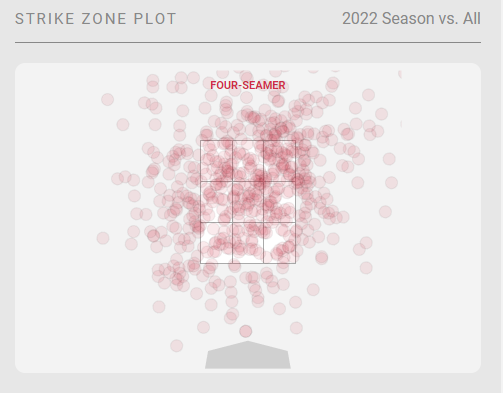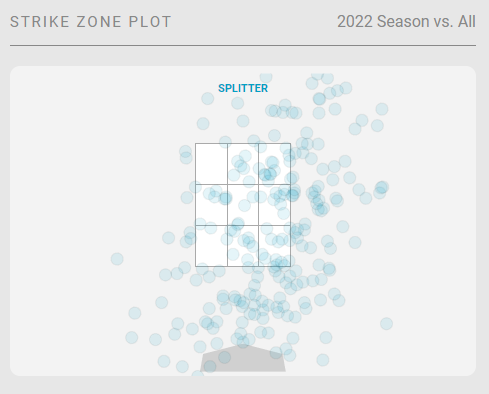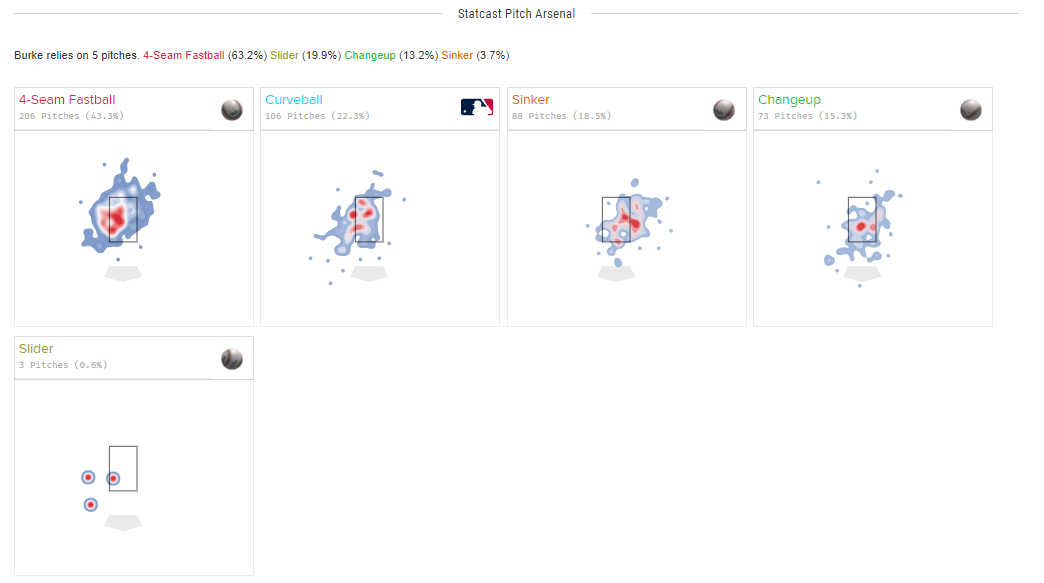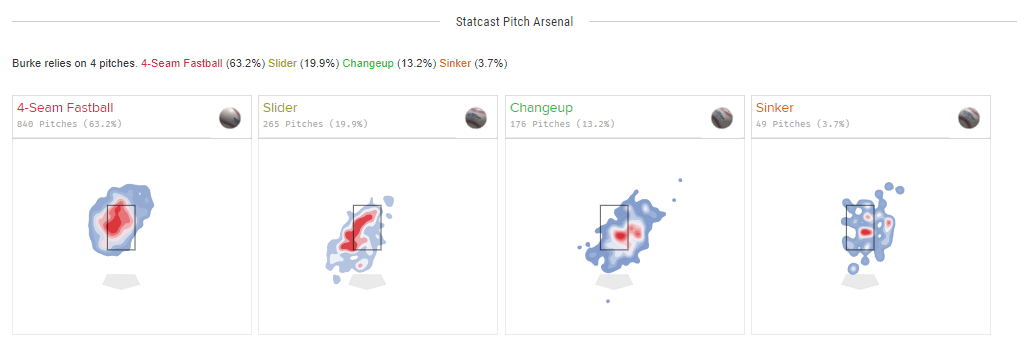There is nothing else in baseball like a dominant closer playing on your favorite team. As the ninth inning begins, the buzz in the stadium is electric; then the entrance music kicks in, and the closer starts his sprint from the bullpen. The decibels increase even louder as he takes his place on the mound, intimidation on his face. Victory is now nearly all but guaranteed.
Who comes to mind when you imagine this scene? Perhaps it is Trevor Hoffman, Mariano Rivera, Eric Gagne, or Francisco Rodríguez?
In more recent memory, it may be Kenley Jansen, Aroldis Chapman, Josh Hader, or Liam Hendriks. Then in 2022, it was Edwin Díaz, locking down the ninth inning for the Mets while Timmy Trumpet’s melody captured the heart of Shea Stadium fans.
It takes a mix of skills, opportunity, and sometimes pure luck to become a dominant closer. So which players have a chance to emerge as baseball’s next top closer?
Rookies aren’t usually 31 years old, but Robert Suarez wasn’t your typical rookie last season with the Padres. The 6’2″ 210 lb. right-hander from Venezuela took an unconventional path to the majors after playing for six seasons in Mexico and Japan.
He had an excellent first season with the Padres, finishing the year 5-1 with a 2.27 ERA, 1.05 WHIP, and 11.5 SO/9 while serving as the primary setup man in front of Josh Hader. Suarez allowed 29 hits and struck out 61 across 47.2 innings.
He got even better as the season progressed, compiling a 2-1 record with a 3.09 ERA in the first half and a 3-0 record with a 1.48 ERA in the second half. In 13 games pitched in September and October, he struck out 21 across 13.1 innings, with a 0.83 WHIP and a perfect 0.00 ERA.
Once the Padres snuck into the playoffs, Suarez continued to play like a seasoned veteran, pitching well in big spots in the NL Wild Card Series and NLDS and earning praise from Padres GM A.J. Preller. He didn’t give up a single run until game two of the NLCS and finished the playoffs with nine innings pitched across seven games, allowing seven hits, three runs, and striking out nine.
The Padres believe Suarez will be able to continue this success as they rewarded him with a five-year, $46 million deal after last season. He will be an important part of the setup team, pitching in front of incumbent closer Hader for a team with World Series aspirations.
However, Suarez has the repertoire and skills to be more than a setup specialist. He throws five pitches in total (fastball, changeup, sinker, cutter, curveball) and primarily relies on his fastball, which averages 98 MPH. Hitters only managed a .189 average against the four-seamer, and the xAVG was even lower at .170.

Suarez also does a nice job consistently throwing strikes with his fastball, as his 55.9 percent Zone% put him in the 92nd percentile among relievers in 2022. He regularly hits the top 1/3 of the strike zone, making hitters miss with both his velocity and pitch placement.

Here he is welcoming Corbin Carroll to the big leagues with a 100 MPH four-seamer that rises out of the zone.
https://gfycat.com/smugdemandinghartebeest
After the fastball, he next uses his changeup which clocked in on average at 89.6 MPH in 2022. He takes a different approach with the changeup, throwing the majority of the pitches out of the zone (30.7% Zone%) and locating them low and away from right-handed hitters.
The discrepancy between pounding the top of the strike zone with his fastball and throwing the changeup at the edge or out of the zone was very effective in 2022 as hitters managed a .095 average against his changeup. He also induced more whiffs with the changeup (19% SwStr%) compared to the fastball (12.5% SwStr%).

The third pitch in his repertoire is his sinker, which averaged 96.5 MPH in 2022 to put Suarez in the 90th percentile among fellow relievers’ sliders in 2022. He throws it into the zone more often than the changeup (around 50.3% Zone%) and tends to keep it to the bottom half to bottom third of the zone. Hitters averaged .167 vs the sinker, but he was fortunate to achieve that result in 2022. Unlike his other two pitches, the sinker’s xAVG of .276 was significantly higher than the actual average. It will be interesting to see how the sinker fares this season.
https://gfycat.com/elaborateidolizedbeardeddragon
Hader dealt with some off-field issues in 2022 and understandably struggled. After coming over to the Padres from Milwaukee, he had a 7.31 ERA and seven saves in 16 innings pitched. It’s more likely that he returns to form than continue to stumble this season, but if Hader does slip in 2023, Suarez could move into the closer role and would flourish. However, Hader will be a free agent after the season, so 2024 could be the year Suarez shines.
The Orioles added Bautista to their 40-man roster in November 2021 to protect him from the Rule 5 Draft after he compiled a 1.54 ERA and 77 strikeouts in 46.2 innings across three minor league stops during the 2021 season. He made the major league roster in 2022 and was used in a setup role during the first half of the season in front of closer Jorge López. López was named an All-Star after amassing 19 saves with a 1.68 ERA, but was shipped to the Twins before the trade deadline, presenting an opportunity for Bautista.
He stepped in as the Orioles’ primary closer and dominated the month of August with a 1.23 ERA, 0.61 WHIP, 12.3 SO/9, and seven saves across 14.2 IP. He finished the 2022 season 4-4 with a 2.19 ERA, 0.93 WHIP, and 15 saves in 65.2 innings pitched.
Bautista attacks hitters with three pitches (fastball, splinter, sinker) but leans on his fastball, deploying it more than 60% of the time. His fastball averages 99.1 MPH, which put him in the 98th percentile of relievers, but can touch 103 MPH.
He uses the four-seamer to pepper the strike zone and consistently puts the pitch in the zone (53.0% Zone%). He locates the pitch to attack the top corner of the zone, garnering a 69.1% STR%, well above the league average of 64.6%. This led to hitters only managing a .202 average against this pitch.

https://gfycat.com/littlenegativebarracuda
Hitters had an even harder time against his secondary pitch, the splitter, managing a measly .093 average against it, with an xAVG of .109. As the splitter pitch plot shows, Bautista covers a larger area with the splitter compared to his fastball.

Whereas his fastball tends to consistently hit the middle-to-top of the zone, his splitter plot is more variable; leaving hitters guessing where it might land in the zone. He favors touching the outside corners, which leads to a lower Zone% of 34.3%, but an increased number of whiffs with a 26.7% SwStr% compared to 12.8% for his fastball. Sometimes he locates the splitter at the low end of the zone and below, as he is shown here striking out Gavin Sheets with a whiff on a low pitch.
https://gfycat.com/acclaimeddimeft
And other times he goes high in the zone with the splitter. Watch the movement here as he dials it up to 88 MPH high and inside, just outside the strike zone, and closes the game out against the Blue Jays.
https://gfycat.com/activeglossyemperorpenguin
Bautista is the best bet on this list to make waves right away in 2023. Unlike last season, he goes into the 2023 season on top of the depth chart as the primary closer in Baltimore, with only Mychal Givens and Dillon Tate as his primary competitors for saves. Tate had only five saves in 2022, and Givens has mainly served in a setup role in his career. He has only 31 total saves across eight seasons.
Bautista also has better stuff than both of them, and if he can keep his walks down, he could one of the best closers in the American League.
Like Suárez and Bautista, Duran was a rookie in 2022 and wasted no time in showing what he could do in the major leagues. Duran stands a powerful 6’5” and 230 pounds and has electric stuff, arguably the best in all of baseball. The Twins haven’t traditionally had strong throwing pitchers that can overpower hitters, but Duran has the best stuff of any Twins pitcher since Francisco Liriano or Johan Santana.
In 2022, nearly 40% of the pitches he threw topped 100 MPH (392 out of a total of 1023 pitches). His fastball topped out at 103.8 MPH and averaged 101, the best in all of baseball, while his curveball average of 88 MPH put him in the 99th percentile.
In late August, Duran became the first pitcher to ever hit triple digits on an “offspeed” pitch when he threw a 100.8 MPH “splinker” – a hybrid splint-finger sinker against the Red Sox:
100 with movement. 🥴 pic.twitter.com/oUPDzh021A
— MLB (@MLB) August 30, 2022
After witnessing a throw like that, it’s probably not necessary to include additional stats or graphics to illustrate his dominance but the numbers back it up too.
During his first season with the Twins, Duran finished 2-4 with a 1.86 ERA, 0.98 WHIP, and 89 strikeouts in 67.2 innings pitched. He was among the league leaders in K% with 33.5% (94th percentile of relievers), SwStr% of 19.1% (97th percentile of relievers), and CSW% with 33.4% (91st percentile of relievers).
Most impressive of all, he also led American League pitchers in Win Probability Added with 4.6, the highest mark since Justin Verlander in 2019.
| 1. | Duran | 4.6 |
| 2. | Verlander | 4.2 |
| 3. | Manoah | 3.7 |
| 4. | Clase | 3.7 |
| 5. | Cortes | 3.6 |
| 6. | Romano | 3.4 |
| 7. | Ohtani | 3.4 |
| 8. | McClanahan | 3.1 |
| 9. | Cease | 3.0 |
| 10. | Bautista | 3.0 |
Duran’s PLV metrics were also nearly all within the top 10-15% of MLB relievers. His PLV of 5.17 shows that he makes quality throws with all his pitches and is more likely to produce positive results than the league-average reliever.

So why haven’t the Twins handed over the role to Duran? One reason is manager Rocco Baldelli’s preference to use multiple arms to close out ball games. He’s avoided naming a clear-cut closer during his time at the helm in Minnesota and doesn’t even like to use the “closer-by-committee” term.
The Twins’ bullpen situation was also murky in 2022, with no closer emerging from the pack. Emilio Pagán began the season as the closer, but struggled and was removed from the role in July. Then the Twins acquired Jorge López in a trade with the Orioles before the trading deadline. However, López couldn’t duplicate the success of his first half in Minnesota and had a second-half ERA of 4.37 with only four saves.
Throughout these up-and-downs, Minnesota preferred to keep Duran in a flexible high-leverage role, where he would sometimes even pitch multiple innings in relief. Out of his 57 appearances in 2022, 10 were multi-inning outings leaving him with more holds (18) than saves (8) at the end of the year.
Going into 2023, López is still the projected closer for the Twins, so time will tell if he recovers from his struggles in 2022. If Minnesota were ever to install Duran as the unquestioned closer, he would quickly develop into one of the best in baseball.
Closing in baseball is a volatile job. Throughout the long season, there are injuries, control issues, roster changes, and different manager strategies that open up jobs and allow unknown or unexpected players to grab the closer position.
Reviewing yearly saves leaders over the past five seasons, you see the names you would expect to see (Jansen, Hader, Chapman, Hendriks) but there are also surprises. For example in 2018, Wade Davis finished second in the majors with 43 saves despite pitching his home games in Coors Field for the Rockies. In 2019, Kirby Yates led baseball with 41 saves, but in his seven other seasons in the majors, he has a combined 16 saves. Mark Melancon was the saves leader in 2021 with 39 saves but then imploded last season for the Diamondbacks and was removed as the closer in midseason.
| 2018 | 2019 | 2020 | 2021 | 2022 |
| Edwin Díaz (57) | Kirby Yates (41) | Brad Hand (16) | Mark Melancon (39) | Emmanuel Clase (42) |
| Wade Davis (43) | Roberto Osuna (38) | Liam Hendriks (14) | Liam Hendriks (38) | Kenley Jansen (41) |
| Craig Kimbrel (42) | Alrodis Chapman (37) | Josh Hader (13) | Kenley Jansen (38) | Liam Hendriks (37) |
Brock Burke could be one of the unexpected players not currently in the closer role to emerge in 2023.
He had an odd start to his major league career, debuting with the Rangers back in 2019 but not pitching again in the majors until last season. In his first taste of the big leagues, he was 0-2 with a 7.42 ERA across six starts. He then missed the entire 2020 season due to shoulder surgery and spent the entire 2021 season in Triple-A finishing with a record of 1-5 with a 5.68 ERA.
Burke was back in 2022, this time as a reliever, and he had a great season, pitching 82.1 innings and compiling a 7-5 record with a 1.97 ERA, 1.06 WHIP, and 90 strikeouts.
So what changed for him in 2022? Burke implemented crucial changes to his pitch arsenal, pitch location, and the movement of his pitches.
A review of his 2019 pitch arsenal shows the primary pitch was his fastball, followed next by his curveball, sinker, and changeup.

Compare that to 2022 when Burke relied again on his fastball but changed the primary location of the pitch. He began hitting the strike zone more frequently, with a 48.9% Zone%, as well as throwing the pitch higher, locating it in the top half of the zone.
He also eliminated using his curveball and instead employed a slider as his secondary pitch. He used the slider to hit slightly lower and more to the outside corner of the strike zone, increasing the amount of space his primary and secondary pitch cover in the zone in 2022, compared to a more compact mapping of his top two pitches in 2019.

Another reason for Burke’s success in 2022 was the change in the movement of his pitches. In 2019, his four-seamer averaged 7.4 inches of horizontal break. He increased this break to 10.3 inches in 2022 which put him above league average for fastball movement.
He also transformed his changeup, expanding the horizontal break of the pitch to 16.9 inches, up from 10.2 in 2019. This variation led to a wider outcome of potential pitch location in 2022, extending the size of his pitch plot and making it less likely hitters knew where the pitch would land. The changeup also induced the most whiffs of Burke’s arsenal and equaled a 18.6% SwStr% in 2022, putting him in the top quarter of MLB relievers.
Burke doesn’t have as much pure power as the other pitchers on this list, but the changes he made last season also positively affected his velocity. The velocities jumped on all three of his primary pitches:
2019
Fastball – 92.5 MPH
Changeup – 85.3 MPH
Slider – 86.0 MPH
2022
Fastball – 95.0 MPH
Changeup – 88.2 MPH
Slider – 87.1 MPH
Overall, Burke also had higher rates of K% (11.7% to 27.4%), SwStr% (5.9% to 11.6%), and CSW% (23.1% to 28.7%) in 2022.
Regarding his current role with the Rangers, Burke was primarily used as a multi-inning set-up man last year with nearly half of his appearances lasting 2.0 or more innings (25 of 52 appearances). However, looking to 2023, Rangers GM Chris Young recently said Burke could be in the mix for the closer role with José Leclerc and Jonathan Hernández.
When season ended, Chris Young talked with Brock Burke about possibly returning to starting. Now: Young doesn’t rule out possibility he could close
— Evan Grant (@Evan_P_Grant) January 28, 2023
If Burke can continue fine-tuning the changes he made in 2022, and the Rangers’ other top options struggle, he could wrestle control of the closer role.
As mentioned earlier in the article, relief pitching is unpredictable, so it would not be a surprise if there are others who emerge in 2023. Keep an eye on pitchers who arrive from the minors with overpowering stuff, injury concerns, and/or control issues as the next star could be among this group, but from this list, Bautista and Duran have the best shot at success right away this season.
Unsplash | Gary Shear
Adapted by Kurt Wasemiller @kurt_player02 on Instagram / @KUwasemiller on Twitter

